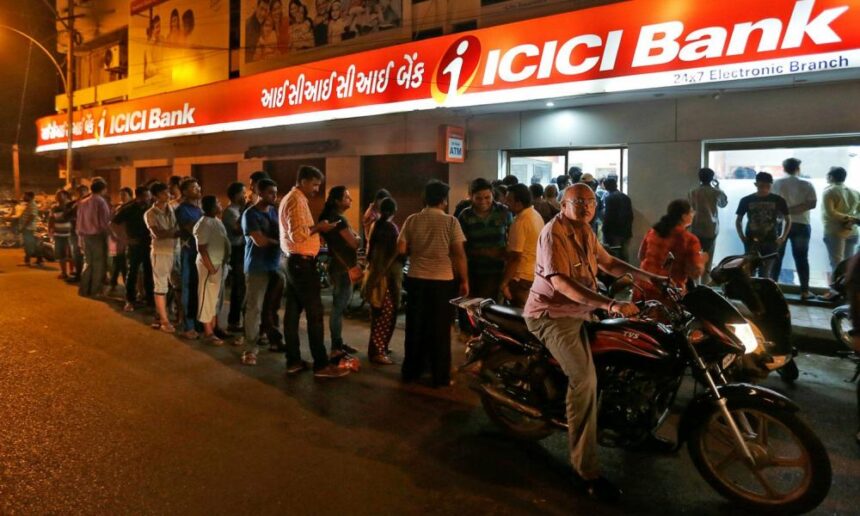Exchange rates for a currency are determined in relation to the rates of other currencies. If we look at the Mongolian tugrug (MNT), one USD was exchanged for 4.04 (MNT) just before the socialist system collapsed in 1990, then, the rate increased to 400 MNT in 1993. It was at a time when broad reforms were being made in the financial sector to revive the economy and transition it to a free market. This reform resulted in the creation of private commercial banks. Twenty years later, the rate was 1,374 MNT for one USD. It reached 2,000 MNT by the beginning of 2016, and is now fluctuating at around 2,400 MNT.
We had an open economy where there were no restrictions for people to travel abroad, or to conduct trade and business activities. As the private sector developed, the economy kept expanding. However, the tugrug has continuously been in decline.
Mongolia’s population is as small as three million. This rules out the development of heavy industry, which means we have to import a lot of materials from other countries, except for food products and some construction materials. We must have foreign currency in order to import goods and services. Where we get most of our foreign currency from is the export of minerals such as coal, copper, and gold. The total value of our imports outweighs how much we are exporting. Hence, our balance of trade always tends to come up negative.
We have been acquiring foreign loans and increasing our imports significantly since 2012. It did not take long before foreign investment in the mining industry declined. It reduced the USD in market circulation and caused the tugrug to weaken.
NEW COUPLE, BUT AN OLD SONG
If we look at the long-term numbers, dollar rates have continuously gone up. Mongolians express frustration only in the short-term, when there is a sudden hike in exchange rates. When it happens, our government (which fully controls the market and sets prices by issuing decrees) reacts by telling Mongol Bank (Bank of Mongolia) to quickly sell dollars and stop the exchange rate surge.
Presidents of Mongol Bank have always been appointed through political affiliations. Therefore, instead of complying with the law and operating independently, they do what the government says and take temporary measures by injecting dollars into the market from the foreign exchange reserve. When the reserve runs low, they make up for the deficit by acquiring short term CNY loans through swap deals. The government and Mongol Bank have been acting like an ostrich that thinks it can disappear by putting its head in the sand.
Statistics from Mongol Bank show that they had the largest amount of foreign assets in December 2012, when the Chinggis Bonds were issued. At the time, Mongolia’s foreign assets and net foreign assets were 5.7 and 5.2 billion MNT respectively. Two years later, in October 2014, Mongol Bank’s net foreign assets were negative for the first time in history. Having run out of reserves, there was a need to borrow enough foreign currency to cover the cost of three months of imports.
Since then, Mongol Bank’s net foreign assets have always been negative. As of October 2016, the net foreign assets and foreign assets were -1.5 and -2.4 billion MNT (one billion USD at today’s rates).
On November 11, the tugrug rate against the dollar soared from 2,350 to 2,700 MNT. Parliament responded by pushing the government, which forced Mongol Bank to inject 72 million USD into the market. This short-term measure reduced the rate to 2,400 MNT, but forced the hand of the President of Mongol Bank to dip into their already very low reserves.
The primary responsibility of Mongol Bank is not to ensure the stability of exchange rates, but to hold the inflation rate under a specific level.
The reason why is that exchange rates are dependent on not only monetary policy but also many other macroeconomic factors. There can be a short-term measure to sell dollars from the reserve in order to prevent sudden and significant tugrug decline, however, the President of Mongol Bank ought to demand that the government reduce its spending.
It looks like J.Erdenebat’s government will act like previous cabinets and handle the exchange rate by digging deeper into the foreign currency reserves. The new government and the new leadership of Mongol Bank are singing the same old song.
Nevertheless, the song cannot always be sung, because reserves will soon run out.
HOW SHOULD WE DEAL WITH EXCHANGE RATE DECLINE
The tugrug decline and the dollar hike in the economy are just like body temperature rising with a fever. In this sense, we can only get rid of the illness by determining what caused it and applying the correct treatment.
Developed countries act like people who have a healthy lifestyle and take appropriate actions to prevent illness. In many instances, they manage to do this. However, Mongolia has not established these habits yet.
What caused Mongolia’s chronic disease is that our political institutions now serve specific groups, especially themselves, instead of making the public’s interests a priority.
The main purpose of Mongolia’s ruling political parties is to retain power. For this reason, they have always conducted short-sighted policies.
Our economic institutions, such as Mongol Bank, have become completely dependent on political institutions, and would rather protect their interests by acquiring loans to make the government look like it has money to spend. Instead of restricting loans, Mongol Bank has been printing money in large amounts and implementing populist, unachievable programs. This has put the country into huge debt. Other economic institutions have also started protecting the interests of their political institutions. For example, all economic institutions that have been involved in raising international loans have been serving specific political groups. It is barring Mongolians from doing business and selling services with foreign currency.
Today, a false expectation has been set in society, where people think international loans can solve everything. The reality is, that regardless of whatever loans we might acquire, we will always have its burden of debt.
The tugrug can only grow stronger if we produce globally competitive products. In order to reach such a state, we need to firmly establish the rule of law, increase our economic competitiveness, and find and eradicate corruption that occurs when foreign financing is distributed and loaned to internal institutions.
2016.11.23
Trans.by B.Amar












